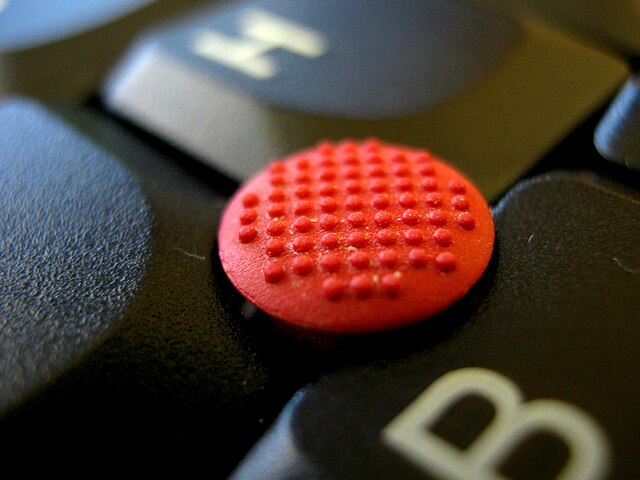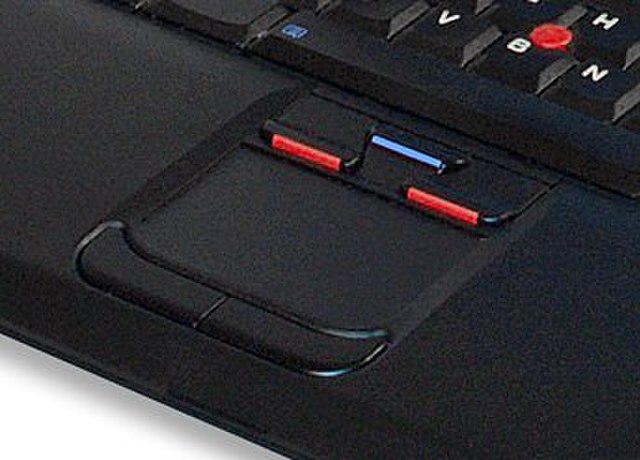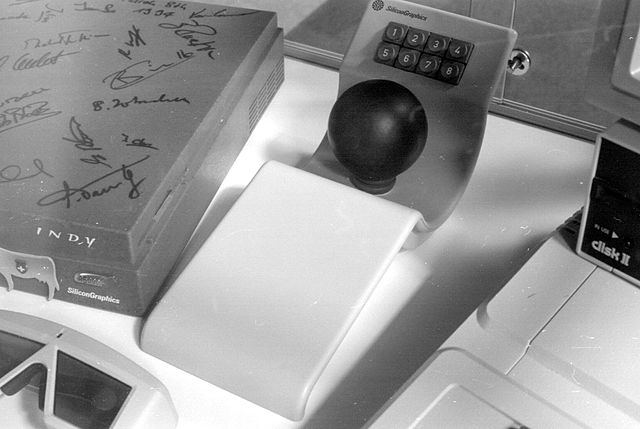A pointing stick is a small analog stick used as a pointing device typically mounted centrally in a computer keyboard. Like other pointing devices such as mice, touchpads or trackballs, operating system software translates manipulation of the device into movements of the pointer on the computer screen. Unlike other pointing devices, it reacts to sustained force or strain rather than to gross movement, so it is called an "isometric" pointing device. IBM introduced it commercially in 1992 on its laptops under the name "TrackPoint", and patented an improved version of it in 1997. It has been used for business laptops, such as Acer's TravelMate, Dell's Latitude, HP's EliteBook and Lenovo's ThinkPad.
Pointing stick on a Lenovo ThinkPad
Detail: rear side of a Lenovo ThinkPad pointing stick with the strain gauges. Size: 8 x 8 mm. Out of patent
IBM ThinkPad caps (left-to-right): Soft Dome, Soft Rim, Classic Dome, Eraser Head (discontinued)
A pointing stick on a mid-1990s-era Toshiba laptop. The two buttons below the keyboard act as a computer mouse: the top button is used for left-clicking while the bottom button is used for right-clicking.
A pointing device is a human interface device that allows a user to input spatial data to a computer. Graphical user interfaces (GUI) and CAD systems allow the user to control and provide data to the computer using physical gestures by moving a hand-held mouse or similar device across the surface of the physical desktop and activating switches on the mouse. Movements of the pointing device are echoed on the screen by movements of the pointer and other visual changes. Common gestures are point and click and drag and drop.
A computer mouse
Touchpad and a pointing stick on an IBM notebook
Trackpoint
An elder 3D mouse







